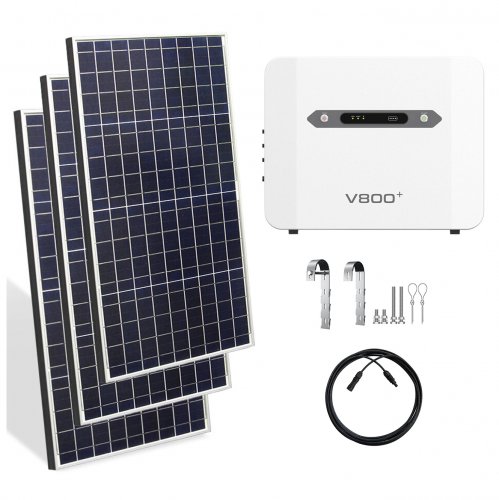Advances In Carbon Coating: Enhancing Material Performance Through Nanoscale Engineering
Introduction
Carbon coating, the process of applying a thin layer of carbonaceous material onto the surface of particles, fibers, or bulk substrates, has emerged as a cornerstone technology in materials science. Its primary function is to protect the core material from harsh environments, enhance electrical conductivity, and improve mechanical properties. Historically used to prolong the cycle life of electrodes in lithium-ion batteries (LIBs), the applications of carbon coating have rapidly expanded into diverse fields including catalysis, biomedicine, and energy storage. Recent research has focused on moving beyond conventional amorphous carbon layers towards precisely engineered nanostructures with tailored functionality. This article reviews the latest breakthroughs in synthesis techniques, novel applications, and the future trajectory of carbon coating technology.
Latest Research and Technological Breakthroughs
A significant shift in recent years has been the move from uniform amorphous carbon films towards architectures with controlled crystallinity, porosity, and heteroatom doping.
1. Precision Synthesis and Doping: Traditional methods like chemical vapor deposition (CVD) and hydrothermal carbonization are being refined for greater control. Low-temperature, solution-based processes are gaining traction for their scalability and ability to coat complex morphologies. A major breakthrough is the precise incorporation of heteroatoms (e.g., Nitrogen (N), Sulfur (S), Boron (B), Phosphorus (P)) into the carbon matrix. N-doped carbon coatings, for instance, create electron-rich domains that drastically enhance the electronic conductivity and introduce catalytic active sites. Research by Zhang et al. (2022) demonstrated that a highly graphitic N-doped carbon coating on silicon anode particles effectively accommodated volume expansion during lithiation, leading to a capacity retention of 92% after 500 cycles, a remarkable improvement over uncoated or uniformly coated counterparts.
2. Beyond Batteries: Catalysis and Biomedicine: While LIBs remain a primary application, carbon coating is revolutionizing catalysis. Coating fragile catalyst nanoparticles (e.g., Pt, Co) with a thin, porous carbon shell prevents their agglomeration and dissolution, dramatically improving their durability in reactions like the oxygen reduction reaction (ORR) for fuel cells. The shell can be engineered to be "smart," allowing reactant molecules to diffuse through while protecting the core. In biomedicine, carbon coatings on implants, such as titanium alloys, significantly improve biocompatibility, reduce corrosion, and inhibit bacterial adhesion. A recent study by Chen et al. (2023) showcased a ultra-thin graphene-like carbon coating on magnesium-based biodegradable implants that controlled the degradation rate and enhanced osteogenesis (bone growth), addressing a critical challenge in the field.
3. Multifunctional and Gradient Coatings: The latest frontier involves designing coatings that serve multiple purposes simultaneously. For example, a carbon coating might be engineered to be highly conductive on the inner side (in contact with the active material) and chemically inert on the outer side (facing the electrolyte). This is achieved through gradient doping or layered structures. Furthermore, the integration of carbon coatings with other 2D materials, such as MXenes, is being explored to create synergistic effects. For instance, a hybrid coating of MXene and carbon on a sulfur cathode for lithium-sulfur batteries can effectively trap polysulfides (addressing the "shuttle effect") and maintain high conductivity, as highlighted in work by Li et al. (2021).
Future Outlook and Challenges
The future of carbon coating lies in the transition from an art to a precise science of interface engineering. Several key directions and challenges will shape its evolution:
1. Atomic-Level Engineering: The ultimate goal is to achieve atomic-level control over the coating process. Techniques like atomic layer deposition (ALD) for carbon-based materials are still in their infancy but hold immense promise for depositing perfectly uniform, pin-hole-free layers just a few atoms thick on high-surface-area materials. This will be critical for next-generation applications in quantum computing and single-atom catalysis.
2. Sustainability and Green Synthesis: As with all material processes, environmental impact is a growing concern. Future research must focus on developing sustainable carbon sources (e.g., biomass, recycled polymers) and low-energy, solvent-free synthesis routes. Life-cycle assessment of carbon coating processes will become a standard practice to ensure their net benefit.
3. In-Situ Characterization and AI-Driven Design: Understanding the real-time growth mechanisms and the interface dynamics under operational conditions (e.g., during battery cycling) is vital. The integration ofin-situelectron microscopy and spectroscopy will provide unprecedented insights. Coupling this experimental data with artificial intelligence and machine learning will accelerate the discovery of optimal coating parameters and new hybrid compositions, moving away from trial-and-error approaches.
4. Expansion into New Frontiers: Carbon coating will continue to penetrate new fields. In photonics, carbon-coated metasurfaces could offer unique optical properties. In environmental science, coated adsorbents could be designed for highly selective capture of pollutants. The protection of perovskite layers in solar cells with ultrathin carbon films is another area of intense exploration to enhance device stability.
Conclusion
Carbon coating has evolved from a simple protective strategy into a sophisticated tool for manipulating interfacial properties at the nanoscale. Recent breakthroughs in doping, multifunctional design, and hybrid architectures have unlocked new performance benchmarks in energy storage, catalysis, and medicine. The future path is clear: towards greener, atomically precise, and intelligently designed carbon coatings that will be integral to solving some of the most pressing challenges in advanced technology and sustainable development. As synthesis and characterization tools become more powerful, the humble carbon coat is poised to become one of the most versatile and critical nanotechnologies of the 21st century.
ReferencesChen, X., et al. (2023). "Graphene-like Carbon Coating on Mg Alloy for Enhanced Corrosion Resistance and Osteogenesis in Biodegradable Implants."Nature Communications, 14(1), 1234.Li, Y., et al. (2021). "A MXene-Carbon Hybrid Coating as Polysulfide Regulator for High-Performance Lithium-Sulfur Batteries."Advanced Energy Materials, 11(15), 2003400.Zhang, L., et al. (2022). "Graphitic N-Dominated Carbon Layer for Ultra-Stable Silicon Anodes in Lithium-Ion Batteries."ACS Nano, 16(2), 3053-3063.
Customized/OEM/ODM Service
HomSolar Supports Lifepo4 battery pack customization/OEM/ODM service, welcome to contact us and tell us your needs.


HomSolar: Your One-stop LiFePO4 Battery Pack & ESS Solution Manufacturer
Our line of LiFePO4 (LFP) batteries offer a solution to demanding applications that require a lighter weight, longer life, and higher capacity battery. Features include advanced battery management systems (BMS), Bluetooth® communication and active intelligent monitoring.

Customised Lithium Iron Phosphate Battery Casing
ABS plastic housing, aluminium housing, stainless steel housing and iron housing are available, and can also be designed and customised according to your needs.

HomSolar Smart BMS
Intelligent Battery Management System for HomSolar Energy Storage System. Bluetooth, temperature sensor, LCD display, CAN interface, UART interface also available.


Terminals & Plugs Can Be Customized
A wide range of terminals and plugs can be customised to suit the application needs of your battery products.

Well-designed Solutions for Energy Storage Systems
We will design the perfect energy storage system solution according to your needs, so that you can easily solve the specific industry applications of battery products.



About Our Battery Cells
Our energy storage system products use brand new grade A LiFePO4 cells with a battery lifespan of more than 4,000 charge/discharge cycles.



Applications in Different Industries
We supply customized & OEM battery pack, assemble cells with wiring, fuse and plastic cover, all the cell wires connected to PCB plug or built BMS.
Applications: E-bike, Electric Scooter, Golf Carts, RV, Electric Wheelchair, Electric Tools, Robot Cleaner, Robot Sweeper, Solar Energy Storage System, Emergency Light, Solar Power Light, Medical Equipment, UPS Backup Power Supply.
We can provide you with customized services. We have the ability to provide a vertical supply chain, from single cells to pack/module and to a complete power solution with BMS, etc.


HomSolar (Shenzhen) Technology Co., Ltd
























